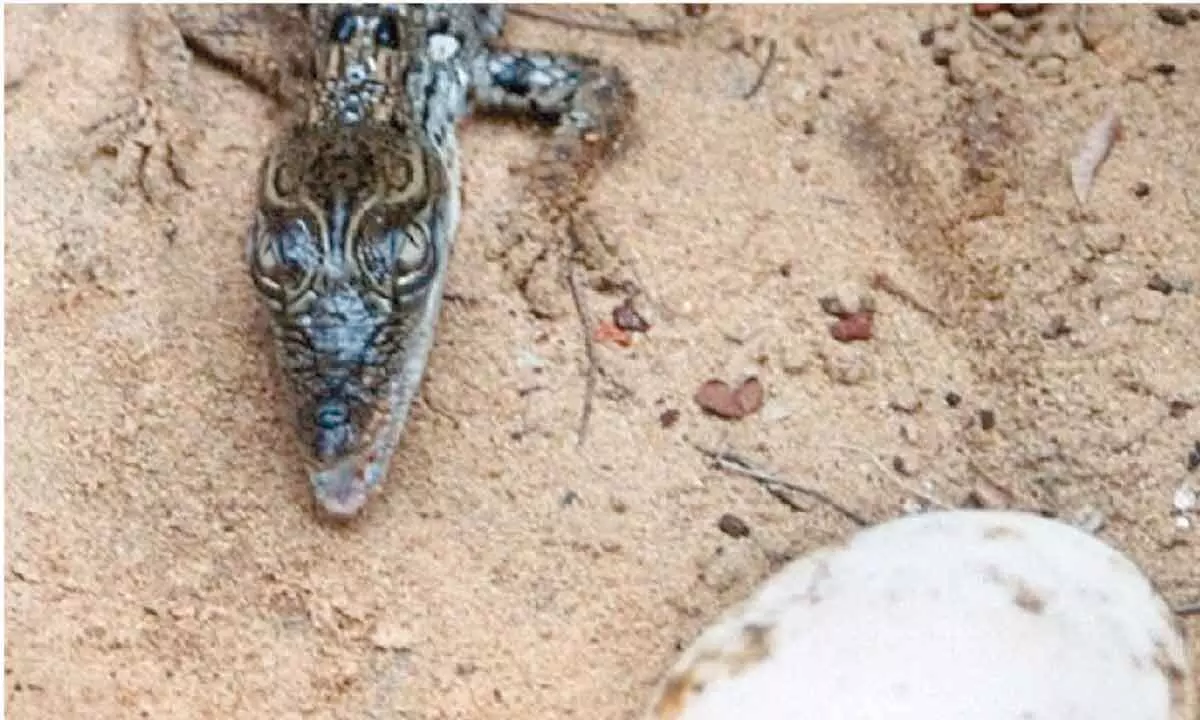Baby crocs break out of eggshells in Bhitarkanika

Over 1,300 baby saltwater crocodiles have broken out of their eggshells to make their way to water-bodies in and around Bhitarkanika national park in Kendrapara district, marking the culmination of annual breeding and nesting season of these endangered reptiles, Forest officials said.
Kendrapara : Over 1,300 baby saltwater crocodiles have broken out of their eggshells to make their way to water-bodies in and around Bhitarkanika national park in Kendrapara district, marking the culmination of annual breeding and nesting season of these endangered reptiles, Forest officials said. This year, a record number of 114 nesting sites of estuarine crocodiles were spotted in the national park, they said.
The sighting of substantial number of nests brings home the point of better conservation measures by the State Forest department, said Dr Sudhakar Kar, herpetologist and wildlife researcher of Odisha Forest department.
The reptiles build nests by the mangrove twigs, leaves and mud on a high ground which is free from watery inundation during the high tide of flood waters during the rainy season and where it can get direct sunlight, said Manas Das, the Assistant Conservator of Forest (ACF) of the park.
The sight of 1,348 baby crocodiles breaking out of eggshells and their act of loitering aimlessly before hopping into the water bodies and creeks was a treat to watch.
The emergence of hatchlings has commenced for the past two days and will continue for a week, the official said.
The ground-level staff engaged in maintaining vigil of the nests were privileged to watch the rare natural phenomenon. The fledgling crocs emerged from the shells sans mothers. However, the forest personnel maintained a safe distance from the nests as human interference turns the reptiles violent and aggressive.
Female crocodiles lay 50 to 60 eggs and the hatchlings usually emerge from the nests after 70 to 80 days of incubation period. However, hardly one out of every hundred baby crocs grows to become adults as their mortality rate is very high. In the wild, babies are devoured by predating aquatic animals.
Adequate conservation measures by the State Forest department have led to a systematic rise in the number of these reptiles over the years, claimed officials. The wildlife sanctuary had been kept out of bounds for tourists and visitors to ensure disturbance-free annual nesting of crocs. The restriction on entry of tourists to the sanctuary was clamped on May 31 and was later lifted on July 31, said officials. One thousand eight hundred and eleven crocodiles were counted this year along the water bodies of the Mahanadi deltaic region.
Estuarine crocodiles are also found in West Bengal’s Sundarbans, having the country’s largest mangrove cover.
Besides the mangrove wetlands in Andaman Islands are home to these species. However, the density and population of crocodiles in wild habitats of Bhitarkanika is much more pronounced.















